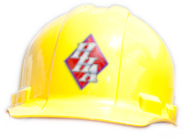Frigid temps mean our heating systems are working overtime. This also means homeowners should be aware of potential dangers with their heating system — including carbon monoxide leaks, which are hard to detect without special alarms. Carbon Monoxide is a colorless, odorless, tasteless gas that is produced any time gas is being used, and it can be deadly to humans and pets.
Leaks can come from many different sources — water heaters, boilers, gas appliances, and furnaces. It’s very important to know the risks and understand how to protect your family for carbon monoxide poisoning. Here’s what we recommend:
1. Install an Alarm
Fortunately, carbon monoxide detectors are cheap, reliable and easy to find. These alarms will alert everyone in your home to even the smallest of leaks. When shopping for a carbon monoxide alarm, be sure to choose a model that not only plugs into an outlet, but also has a battery backup in case you experience a power outage. We highly recommend purchasing several alarms, at least one on every floor and ideally one in every bedroom.
Unlike smoke, carbon monoxide is heavy and tends to gather on the ground; therefore, plug your carbon monoxide alarms into outlets closer to the floor. Each month when you test your smoke alarms, use that as an opportunity to also test your carbon monoxide detectors.
2. Know the Symptoms
If you have carbon monoxide poisoning, you may experience dizziness, nausea, headaches, weakness, confusion or chest pain. In prolonged exposure, you may also lose consciousness. If you are suspicious of a carbon monoxide leak in your home, it’s crucial that everyone (including pets) goes outside into fresh air as quickly as possible. If you’re experiencing any of the above symptoms, call 911 and seek medical attention immediately.
Don’t go back into your home until you’ve had an HVAC professional survey the area. Your home will need to be completely ventilated before it’s safe to go back inside. If your alarm ever goes off but you are not experiencing symptoms, evacuate pets, children and elderly and call your HVAC company for an emergency inspection.
3. Get a Full Heating Inspection
The best way to stay safe from carbon monoxide leaks is have your HVAC system inspected by a professional once a year. We can find small issues that may not be causing any problems now, but could lead to gas leaks in the future. This will not only save you money, but it will keep you and your family safe from things like carbon monoxide poisoning.
If you’re not sure when your last inspection was, that probably means it’s time to schedule an appointment.
Contact us today to schedule an appointment
Give us a call or click the link above (731) 689-3651
Source Credit: https://bit.ly/30oHgin


